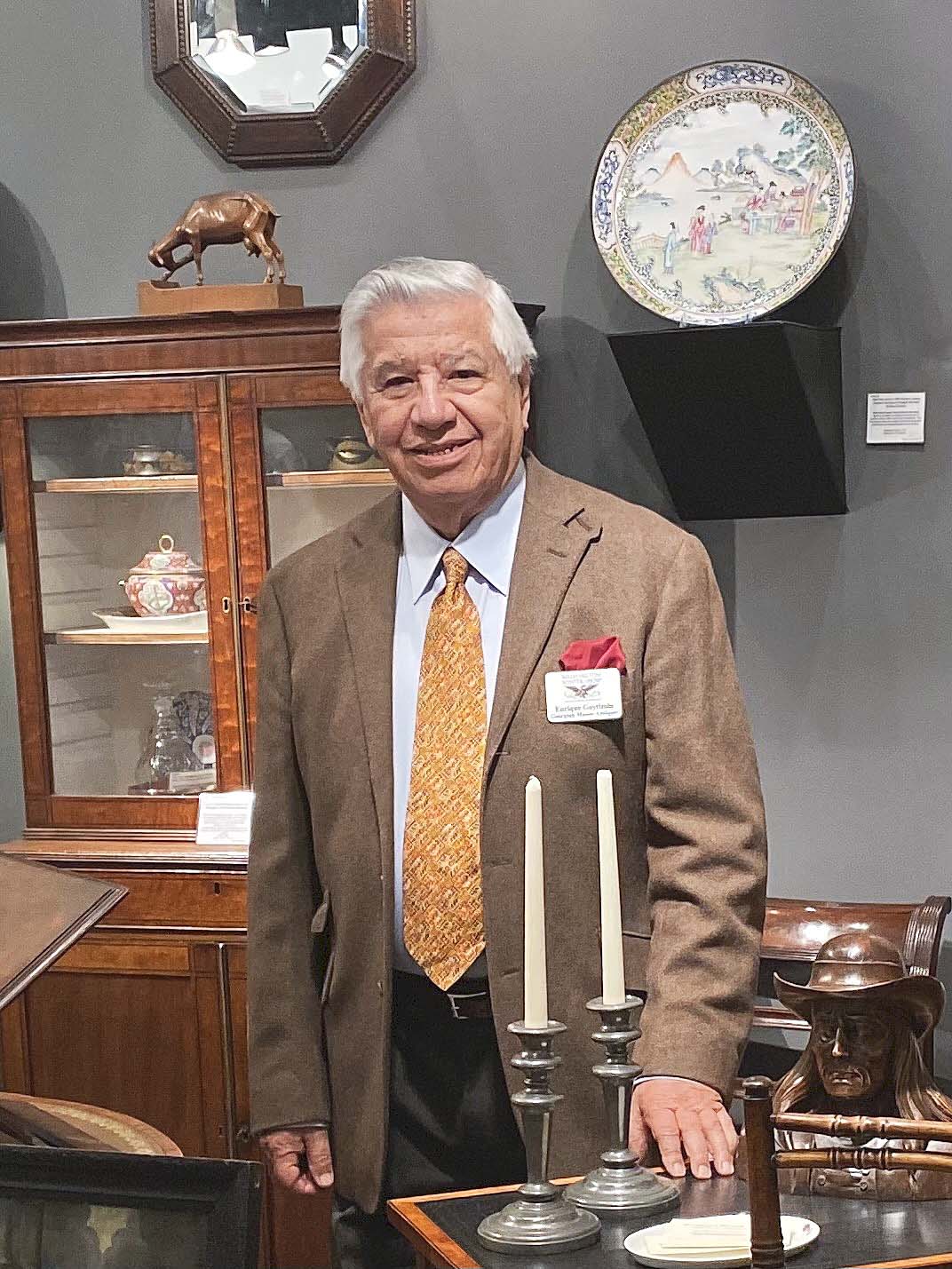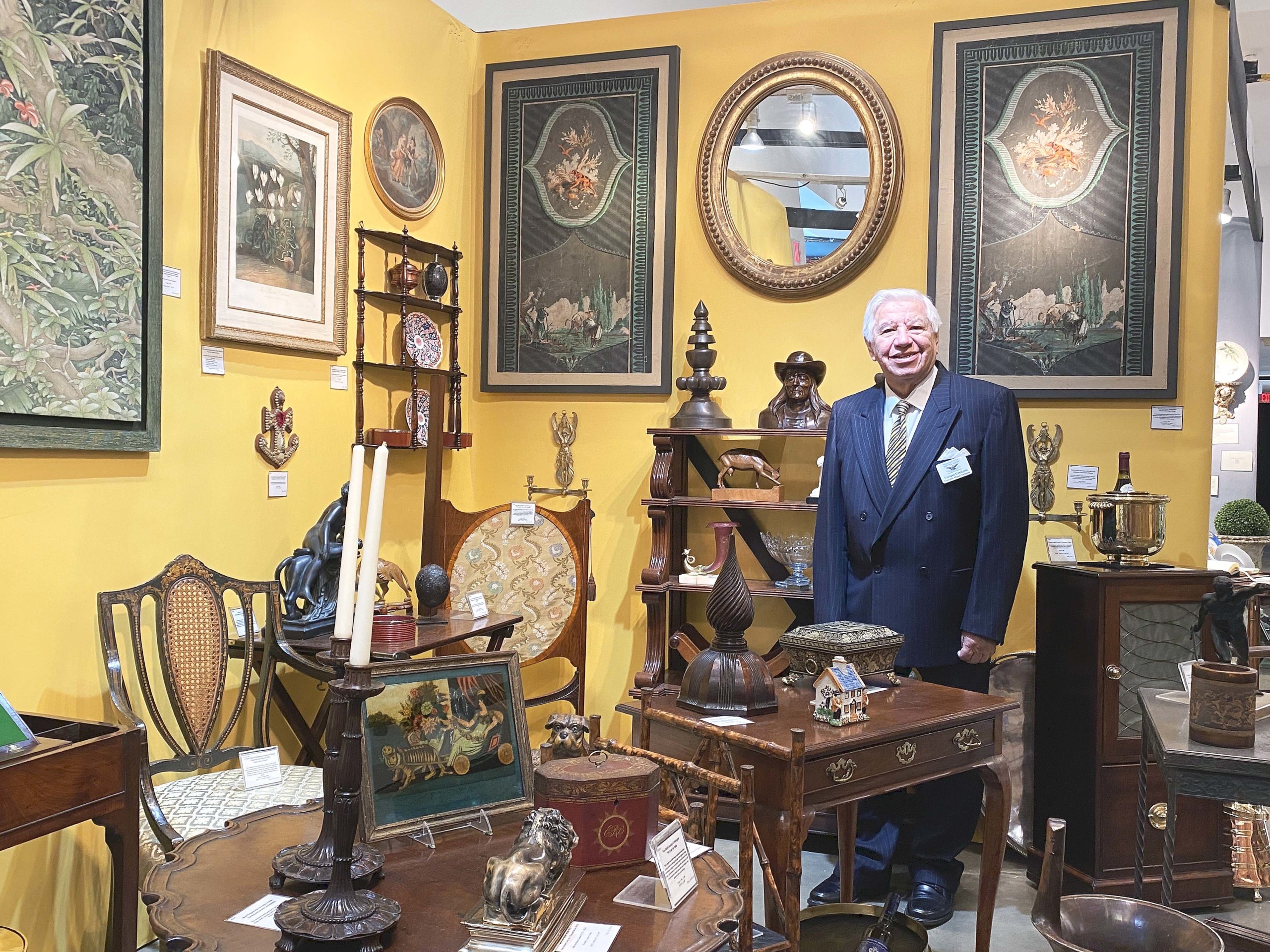
English furniture dealer Ricky Goytizolo, who, until recently, was the proprietor of Georgian Manor Antiques, has been a fixture on the antiques show circuit for 50 years. Now 85 years young, he recently announced his retirement and we called him on the phone to share some of his memories of a lifetime and what the next chapter looks like.
You’ve announced plans to retire; have you formally retired? What precipitated your decision?
Yes, I have. I did my last show in January, in Washington, DC, after the Washington Winter Show. I’ve been in the antiques business for 55 years and been doing shows for 50 of them. I’m 85 now and have had to depend more and more on movers to help; so, after the show closed, I decided it was time to retire. I wanted to do it while I was still active — it wasn’t because I was sick or anything.
For readers who don’t know you, can you tell us what your path towards becoming a dealer looked like?
I came to New York City from Lima, Peru, to study interior design at the New York School of Interior Design. I had initially planned to go back to Peru after graduation, but I was working for Sylvia Tearston Antiques and had the opportunity to open my own shop.
My first shop was called Georgian House, and I was at 61st Street and Second Avenue. It was near the residence of the Secretary-General to the United Nations; the secretary general at the time was Kurt Waldheim, and he and his wife would walk past my shop. They came in one day and bought seven pieces to help decorate the residence, and I got a lot of publicity from that. Quite a few wives of diplomatic ambassadors came in and bought from me, too.
Because of that publicity, I was invited to do the Winter Antiques Show, in 1975; it was my first show. In one week of doing the Winter Antiques Show, I sold more than I’d done one year in the shop and I thought, “This is the right business for me.”
I have always liked the clean lines of British design and the woods they used and, because of that, we became known for British furniture: late Georgian and Regency period.
After the Winter Antiques Show, I was invited to do other shows managed around the country, by Russell Carrell.
What were some of the shows you used to do?
In addition to the Winter Antiques Show in New York City and the Washington, DC, Winter Show, I did the Philadelphia Antiques Show, the Ellis Show in Boston, the Southport/Westport Antiques Show, the Delaware Antiques Show and shows in Charlotte, N.C., Cincinnati and Cleveland, Lake Forest, Ill., Grosse Point, Mich., and other smaller shows. The shows with good charities were usually the ones that lasted the longest.

What are some of the pieces you’ve been most proud to have handled in your career?
To me, that’s always been a difficult question. We have always paid a lot of attention to the quality and selection of pieces we sold. Over the course of 55 years and 50 shows, we’ve sold so many different things — furniture and also accessories — to so many different people.
What were some of your more expensive pieces?
I sold a center table for $75,000. When we were buying for the Winter Antiques Show, we knew we would get knowledgeable collectors from all around the country who were exposed to quality and high prices.
For people considering a career as a dealer, what advice can you give them?
I think you really have to have the devotion and a passion for the trade. You have to be consistent in both good and bad moments, and you have to like talking to people about what you have. It requires sacrifice from family time because you are often away at shows during birthdays, anniversaries and holidays; it’s almost like being married to the business.
It’s also very demanding, physically. It’s like moving your house four times in a week: you have to pack up the things you take to a show and load them onto a truck, then unload them at the show venue. After the show is over, you have to pack everything back up and then unload them at your shop or gallery.
A lot of people have no idea how hard it is but the community of dealers, we are like a family. It was wonderful to be a part of that.
Many shows these days are just two days, which I think is harder than longer shows. If a show is Saturday and Sunday, the Friday night is usually an opening night that is very social, sometimes it supports a charity. The people who come to those are not necessarily buyers. Then, on Saturdays, you’re competing with nice weather or family events; on Sundays, people go to church or brunch, and then the show closes in the late afternoon. I think more shows should open on Thursday nights, with three full days — Friday, Saturday and Sunday — to buy.
The Winter Antiques Show was 10 days long and we would sell every day. We used to have to bring in more furniture during the show to replace what we’d sold.
What does retirement look like at this point? Any things you particularly want to do?
I will be contacting friends and clients to sell my inventory. I used to travel quite a lot, both for business and pleasure, but I haven’t done much of that in the past 12 years. I look forward to doing that again. I also want to see my family more; two of my grandchildren are in college — one is at Northeastern, the other is at Cornell — and the third is still in high school, in Darien, Conn.
—Madelia Hickman Ring




